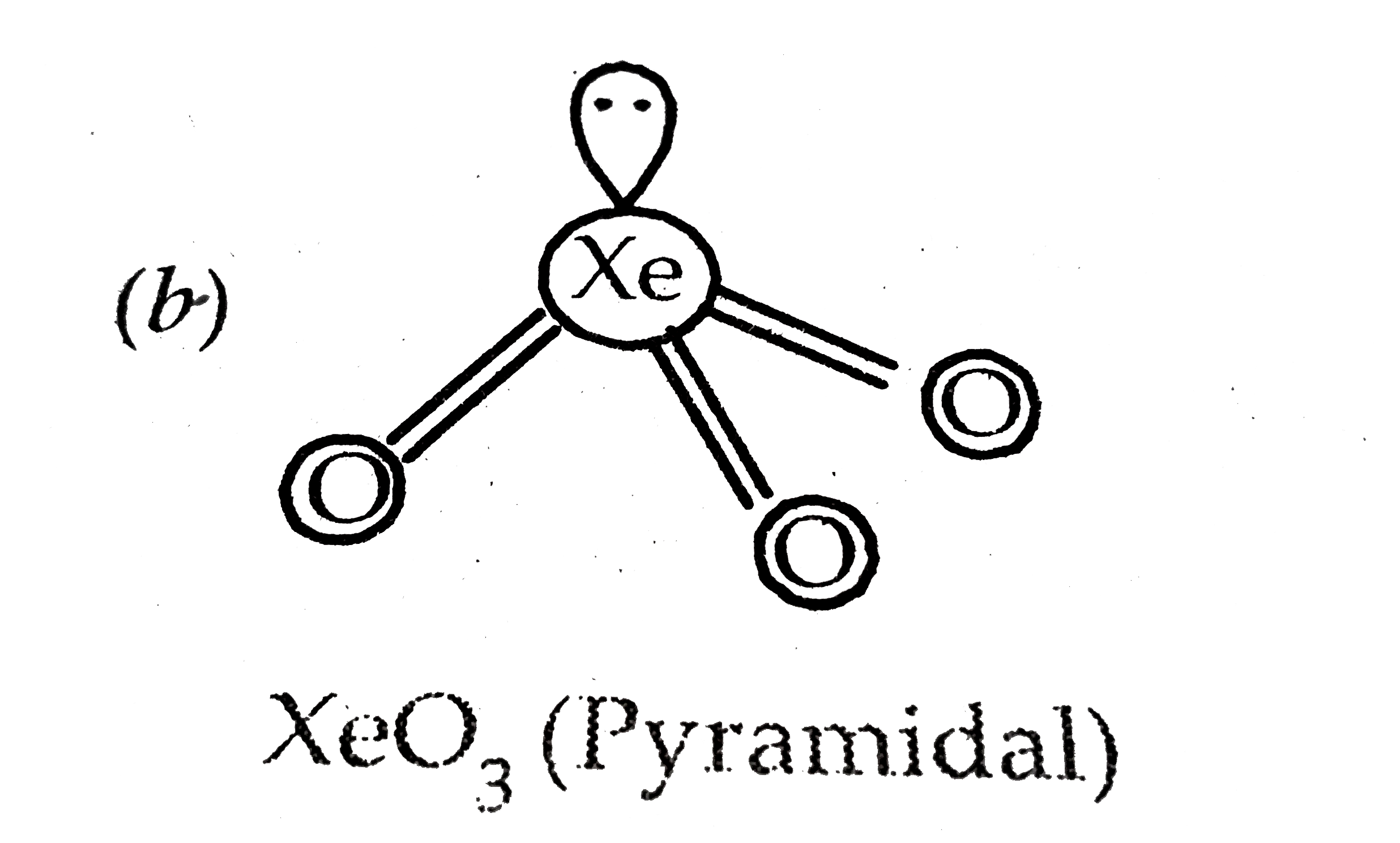(a) Account for the following :
(i) PCl5 is more covalent than PCl3.
(ii) Iron on reaction with HCl forms FeCl2 and not FeCl3.
(b) Draw sturcture of XeO3.
Video Solution
Text Solution
(i) It is difficult to lose all the three electrons to form p3+ or even more difficult to lose all the five valence electrons to form p5+ ions. Therefore, higher elements have no tendency to form ionic compounds. Instead they form covalent compounds by sharing of electrons.
Since elements in the +5 oxidation state have less tendency to lose electrons than in the +3 oxidation state. Hence, elements in the +5 oxidation state have more tendency to share electrons than in the +3 oxidation state. Thus, elements in the +5 oxidation state are more covalent than in the +3 oxidation state.
(ii) Fe reacts with HCl to form FeCl2 and H2,
Fe+2HCl→FeCl2+H2
H2 thus liberated prevents the oxidation of FeCl2 to FeCl3.
(b) 
|
Similar Questions
Knowledge Check
Fecl3 solution on reaction with SO2 changes to?
AFeCl2BFe2(SO4)3CFe2(SO3)3DFeSO4The reactions of tolunce with Cl2 in pressnce of FeCl3 gives :
Abenzoyl chorideBbenzyl chlorideCo- and p- bromophenolDm-chlorotolueneIn the reaction
2FeCl3+H2S→2FeCl2+2HCl+SAFeCl3 acts as an oxidising agentBBoth H2S and FeCl3 are oxidisedCFeCl3 is oxidised while H2S is reducedDH2S acts as an oxidising agent
Why is PCl5 more covalent than PCl3 ?
View SolutionAccount for the following :
(i) PCl5 is more covalent than PCl3.
(ii) Iron on reaction with HCl forms FeCl2 and not FeCl3.
(iii) The two O-O bond lengths in the ozone molecule are equal.
View SolutionWhy is PCl5 molecule more covalent than PCl3 molecule ?
View Solution(a) Account for the following :
(i) Ozone is thermodynamically unstable.
(ii) Solid PCl5 is ionic in nature.
(iii) Fluorine forms only one oxoacid HOF.
(b) Draw the structure of
(i) BrF5
(ii) XeF4
View SolutionComplete the following :
(i) R−OH+PCl5→
(ii) R−OH+PCl3→
View Solution
